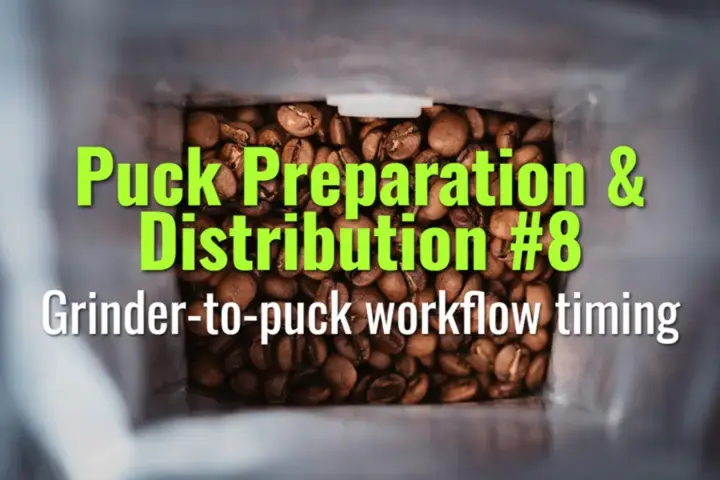Grinder-to-puck workflow timing
Why timing between grinding, puck preparation, and extraction matters, and how to streamline workflow for consistency.
- Coffee Basics Nerds
- 1 min read
Article 8 of 12 in Puck Preparation & Distribution/

Why Timing Matters
- Freshly ground coffee begins degassing immediately.
- Delays between grinding and brewing can change resistance, flow, and flavor.
- Inconsistent timing across baristas leads to shot variability.
Ideal Workflow
- Grind to Order: Grind immediately before puck prep to minimize staling.
- Dosing & Distribution: Transfer grounds to portafilter, break clumps (WDT if needed), distribute evenly.
- Tamping: Tamp promptly to stabilize puck density.
- Lock & Brew: Insert portafilter and begin extraction without delay.
Risks of Delay
- 30–60 Seconds Delay:
- Grounds lose aromatics, begin drying.
- Puck resistance changes, leading to faster flow.
- Longer Delays:
- Increased risk of channeling due to uneven moisture.
- Flatter, duller flavor profile in cup.
Practical Workflow Tips
- Organize station: grinder, tools, and machine within arm’s reach.
- Avoid grinding multiple doses ahead unless in extremely high volume service.
- Train all baristas on same sequence: grind → prep → tamp → brew.
- Use timers or visual cues to reinforce consistency.
Summary
Grinder-to-puck timing directly impacts extraction consistency. Minimizing delay between grinding, puck prep, and brewing preserves aromatics, stabilizes flow, and ensures reproducible espresso flavor across baristas and shifts.